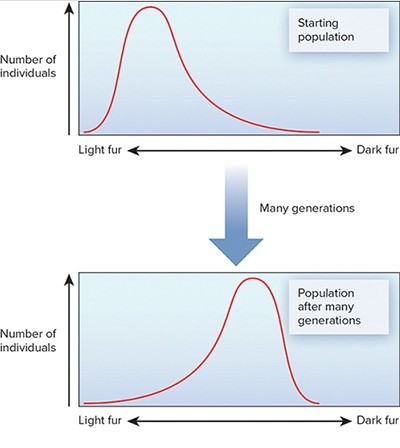A population of voles (small mammals) live in a shady forest. Originally, the voles are a light tan color, but then a dark brown coloration arises by a new mutation. The darker voles are harder for predators to see in the leaf litter, thus they are less susceptible to predation. After 10 generations the majority of voles in the population are the dark brown color. What type of selection are the population of voles going through? 
A. Negative frequency-dependent selection.
B. Directional selection.
C. Balancing selection.
D. Stabilizing selection.
E. Diversifying selection (disruptive selection).
Answer: B
You might also like to view...
The Calvin cycle provides autotrophs the ability to convert inorganic carbon into biomass and generate energy during this process
Indicate whether the statement is true or false.
Metabolomics is based on the premise that ____
a. plant mitochondria are unique to harnessing ATP to develop alternative energy sources b. plant chloroplasts are unique to harnessing light for energy c. harnessing the 200,000 to 1 million different chemicals produced by plant metabolism for human needs is increasingly important d. plant metabolism is difficult to manipulate e. plant metabolism is simple to manipulate
The above figure represents
a. cloning with a stem cell. b. somatic cell nuclear transfer. c. genetic manipulation of a single gene. d. microsurgical manipulation of a chromosome. e. none of these
In what order do sperm move through the structures of the female reproductive tract?
A. ovary; oviduct; uterus; vagina B. cervix; vagina; uterus; oviduct C. vagina; uterus; oviduct; ovary D. vagina; cervix; uterus; oviduct E. endometrium; cervix; uterus; oviduct